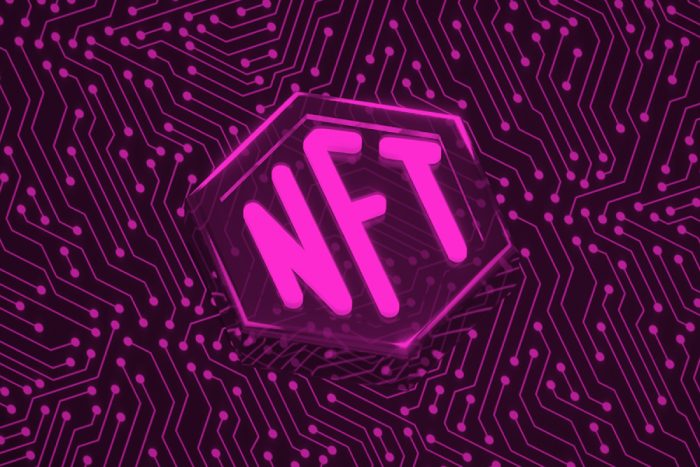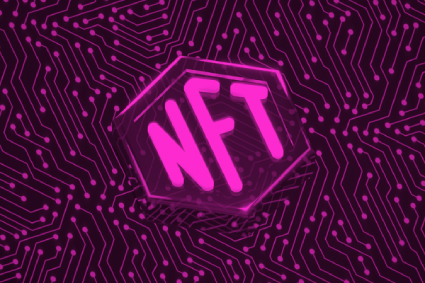Based on global interest and use patterns, they also provide an access point or gateway for increased adoption of other parts of decentralized finance (such as exchanges and wallets).
But in this post, we’ll dive deeper into how NFTs work and some emerging use cases.

But first, here’s a quick recap of why NFTs are so important:
- Digital ownership: The idea of owning an image or single document on the internet almost seems impossible. In the times of screen capture and copy and post, it’s nearly impossible to tell the origin story of stuff on the internet. By leveraging the public ledger aspects of blockchain, NFTs allow people to create digital certificates or deeds for things like images, videos, music, writing, and other digitally-based outputs.
- Collectibles: The ability to show origins and ownership for the first time allows the ability to create images, videos, art, etc., that are unique and can exist solely on the internet as special objects, much like a fine art painting or a rare book can exist in the physical world. Creating the ability to show one-of-a-kindness enables activities like digital collectibles and scarcity.
- Royalties: The ability to verify and track ownership as digital objects flow through a secondary market means that creators can earn royalties when digital content and artwork are sold in secondary markets. The concept of real royalties for digital goods could result in new kinds of business models and opportunities for creators.
- Digital ledger: NFTs leverage the public ledger aspects of blockchain, meaning users can trace the ownership status and ownership history of digital objects, creating a sense of history or backstory for digital things.
The basic mechanics of an NFT
There are two significant reasons why NFTs exploded on the scene beginning in 2021. One primary reason can probably be attributed to the general euphoria and excitement that was part of crypto’s historic bull run of 2021.
The second reason is that it is now effortless to mint and sell NFTs — or to start buying and collecting NFTs. Getting started with digital collectibles is pretty straightforward because several NFT marketplaces have made the process as easy as buying or selling something on eBay.
The actual process varies slightly from marketplace to marketplace, but here are the steps you can expect at a high level:
Step #1: The first step is to choose an NFT marketplace from which to either mint, sell, or buy an NFT. Now, there are several popular NFT marketplaces to choose from (OpenSea, Rarible, and SuperRare) are all examples.
Step #2: Select a wallet that supports NFTs and is supported by the marketplace. Most NFT wallets will exist as browser/software wallets. It’s important to note not all crypto wallets support NFTs — most likely, you wouldn’t be able to send an NFT to an exchange-based wallet, for example.
Step #3: Once you have selected an NFT marketplace and connected a supported wallet, the next step is to either create/mint an NFT or to buy/collect NFTs.
- Creating an NFT from within a marketplace is as easy as uploading a digital file and filling fields like a social media posting. Common things to add to an NFT listing are the title, description, listing cost, etc. Another factor is setting a royalty rate. The royalty rate allows NFT creators to continue to generate revenue from secondary sales of the NFT if it changes hands.
- Collecting or buying an NFT from an established NFT marketplace is pretty simple; you reverse engineer the process above. The first step will be to connect a wallet that both supports NFTs and is supported by the marketplace. The second step will be to find the NFT and then see if it has a “buy now price,” if it’s being auctioned it will probably say something like “submit a bid,” or it might have a more ambiguous ask like, “make an offer.” Regardless, at this point, buying an NFT is as simple as buying other stuff online. Once you get the NFT, the unique address with all the details attached to that NFT will be available in your connected wallet. Then, NFTs can be sent like other assets or relisted on an NFT marketplace for sale.
Step #4: Once minted, NFTs should all have a token ID and a contact address. Usually, this info is part of the listing on the NFT marketplace. Obtaining the contract address and token ID allows people to investigate NFTs or keep tabs on the NFT on-chain using blockchain explorers like Etherscan (or something comparable for the suitable issuing chain).
Step #5: The last thing to remember when minting or buying an NFT is that fees are involved. When minting NFTs, creators have to pay gas or blockchain network fees (the prices will vary depending on the chain used) and a marketplace fee. Generally, these fees are calculated before the transaction is settled, and it’s another reason why the first step — connecting a supported wallet (with funds in it) — is essential.
NFT blockchains and NFT standards
Like NFT-specific marketplaces and specialized infrastructure (like wallets for collectibles) developing around new forms of digital ownership and collectibles, there are also new blockchain standards to support NFT activities.
Several blockchains are becoming known for NFT-related activities, but these are the most popular right now:
- Ethereum: Ethereum has the largest NFT development community mainly because creators built many early high-profile NFT projects on Ethereum. One major Ethereum NFT standard is ERC-721, although NFTs can be minted using other Ethereum standards as well.
- Solana: During the 2021 NFT hype cycle, Solana gained much traction and market share. Solana’s token standard is known as token metadata, and an entire ecosystem has developed around creating different kinds of Solana-based NFTs.
- Polygon: Polygon is also gaining popularity for minting NFTs because of its speed and low transaction costs. Polygon is Ethereum-based and uses Ethereum NFT standards.
As the NFT wave continues more and more, blockchain developer communities are creating standards and tools to support non-fungible tokens.
The future of NFTs
Like the rest of the crypto market, NFTs follow a boom/bust cycle in terms of overall participation and enthusiasm.
But one thing that makes NFTs different or more accessible to new participants is that NFT creating and collecting is more social than traditional crypto activities — and social activities on the internet can go viral or at least attract a lot of attention.
While the first wave of NFTs seems to be dominated by internet culture and digital art, there will be continued experimentation and innovation about the best ways, formats, and uses of showing, sharing, and verifying digital ownership.
As more and more of our lives unfolds online — or at least in digital formats, it makes sense that the ability to prove origin and authenticity will become more in demand.



